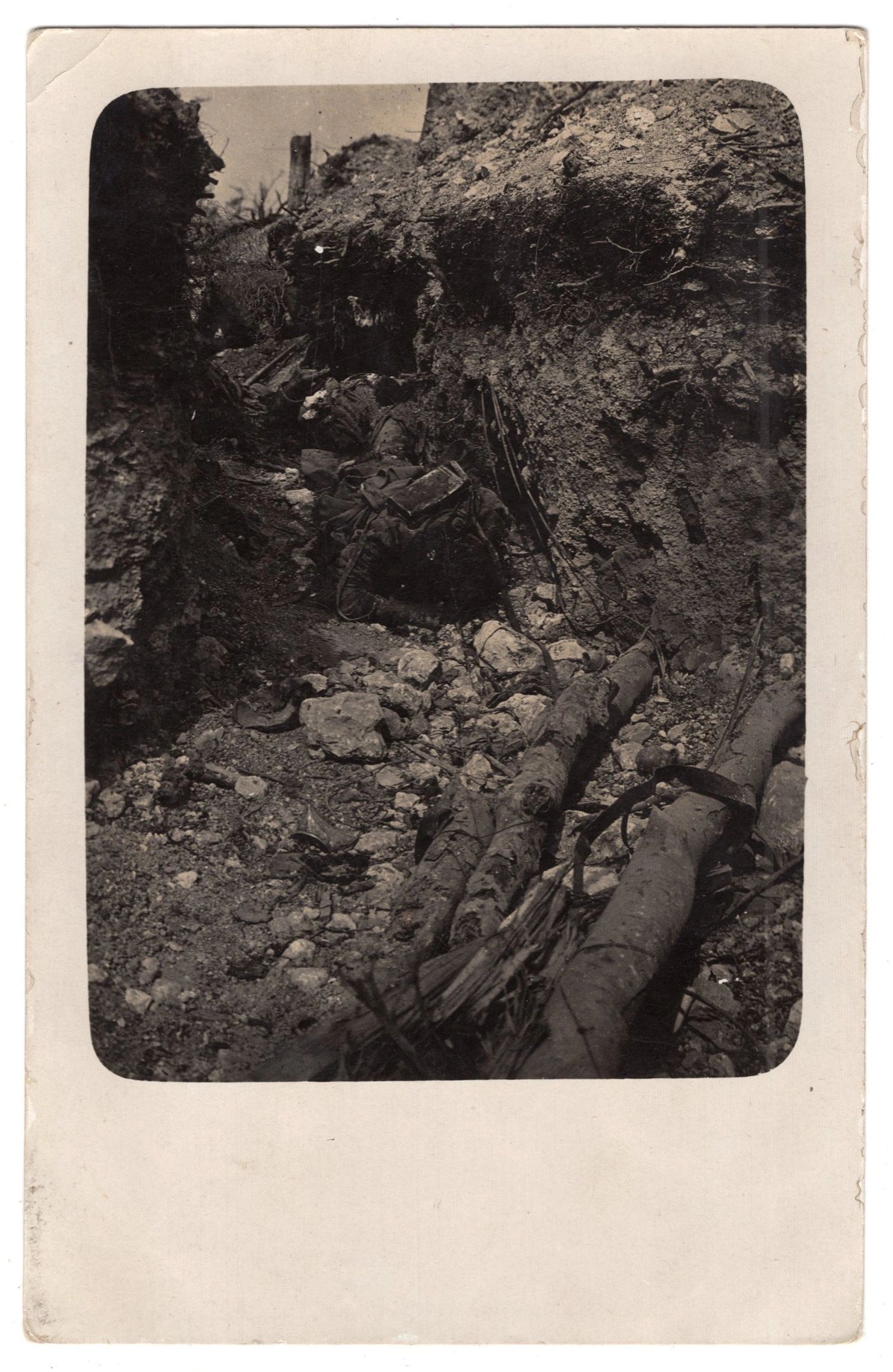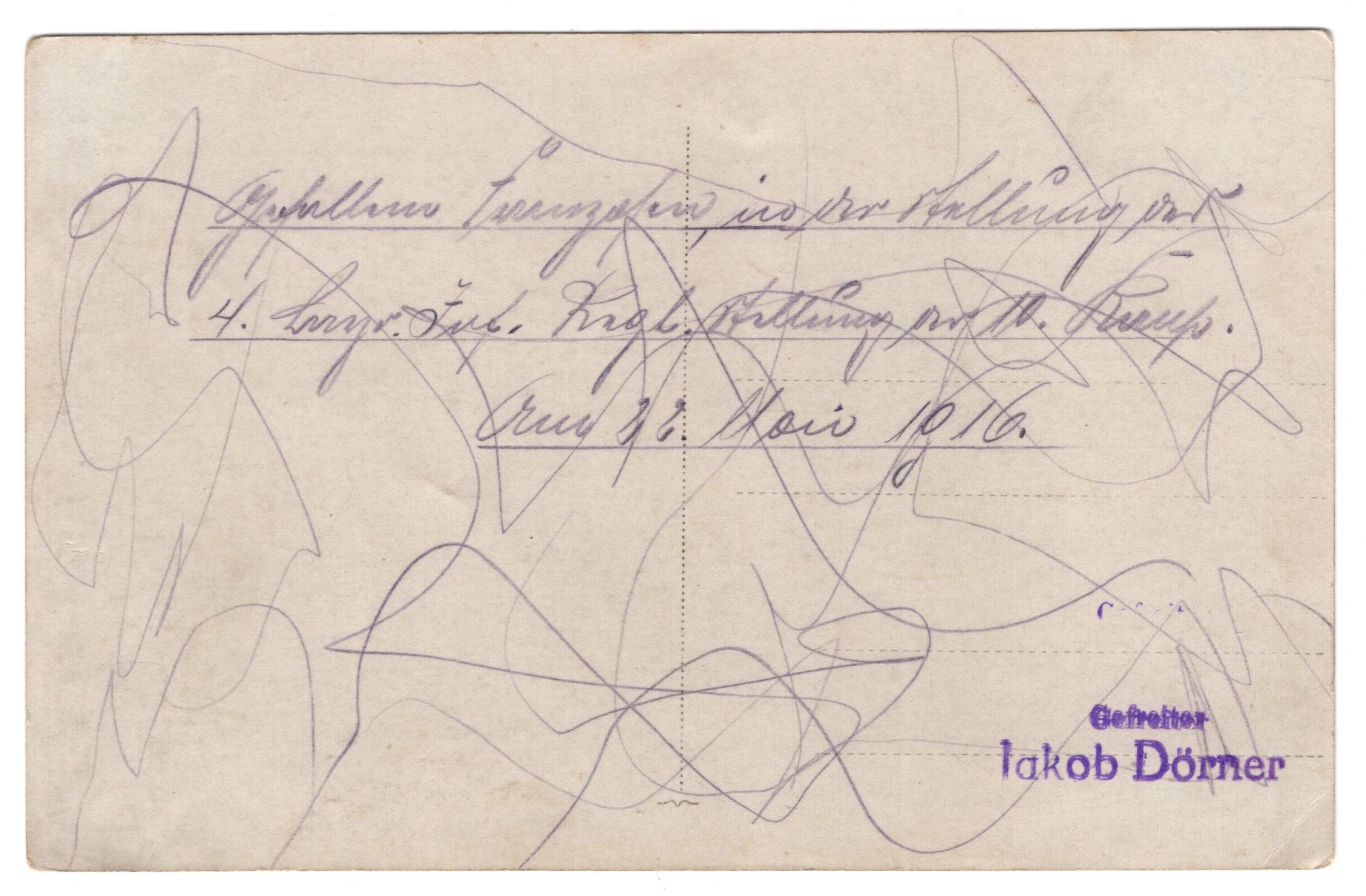Description
Here is your chance to own a nice postcard of an Imperial era battlefield. Photo on the front showing a shelled trench position with a few casualties. In fair condition overall with typical signs of use. Writing with scribble across the reverse. Imperial Germany was formally founded on 1 January 1871 when the south German states, except for Austria, joined the North German Confederation and the new constitution came into force changing the name of the federal state to the German Empire and introduced the title of German Emperor for Wilhelm I, King of Prussia from the House of Hohenzollern. Berlin remained its capital, and Otto, Prince of Bismarck, Minister-President of Prussia became Chancellor, the head of government. As these events occurred, the Prussian-led North German Confederation and its southern German allies were still engaged in the Franco-Prussian War. The German Empire consisted of 26 states, most of them ruled by royal families. They included four kingdoms, six grand duchies, five duchies (six before 1876), seven principalities, three free Hanseatic cities, and one imperial territory. Although Prussia was one of few kingdoms in the realm, it contained about two thirds of Germany’s population and territory. Prussian dominance had also been established constitutionally. During its 47 years of existence, the German Empire was an industrial, technological, and scientific giant, gaining more Nobel Prizes in science than any other country. By 1900, Germany was the largest economy in Europe, surpassing the United Kingdom, as well as the second-largest in the world, behind only the United States. Late in Bismarck’s chancellorship and in spite of his personal opposition, Germany became involved in colonialism. Claiming much of the leftover territory that was yet unclaimed in the scramble for Africa, it managed to build the third largest colonial empire at the time, after the British and the French empires. Germany became a great power, boasting a rapidly developing rail network, the world’s strongest army, and a fast-growing industrial base. In less than a decade, its navy became second only to Britain’s Royal Navy. In 1879, the German Empire consolidated the Dual Alliance with Austria-Hungary, followed by the Triple Alliance with Italy in 1882. It also retained strong diplomatic ties to the Ottoman Empire. When World War 1 arrived, Italy left the alliance and the Ottoman Empire formally allied with Germany. In the First World War, German plans to capture Paris quickly in the autumn of 1914 failed. The war on the Western Front became a stalemate. However, Imperial Germany had success on the Eastern Front. The German declaration of unrestricted submarine warfare in early 1917 contributed to bringing the United States into the war. The high command under Paul von Hindenburg and Erich Ludendorff increasingly controlled the country, but in October after the failed offensive in spring 1918, the German armies were in retreat, allies Austria-Hungary and the Ottoman Empire had collapsed, and Bulgaria had surrendered. The Empire collapsed in the November 1918 Revolution with the removal of its monarchs. This left Germany with the Weimar Republic, and a devastated and unsatisfied populace, faced with postwar reparation costs of nearly 270 billion dollars, all in all leading to the rise of Adolf Hitler and Nazism. Free shipping ANYWHERE IN THE WORLD & I don’t charge PayPal fees like some of the other guys!








